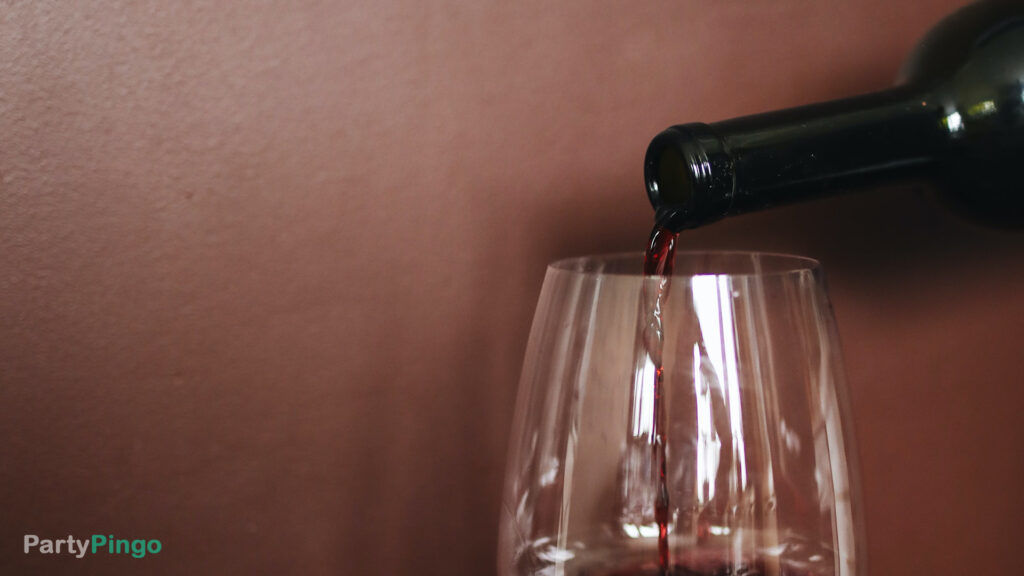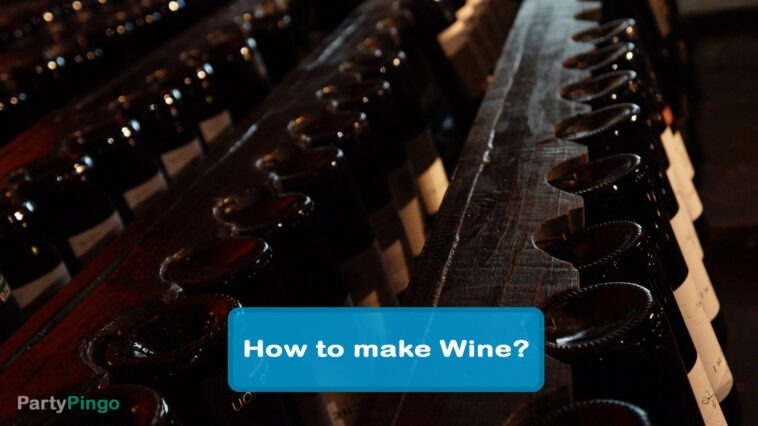How do I make wine?
Fermented, alcoholic beverages have been known since the earliest human civilizations. The wine was most likely invented by a case where sweet fruits or berries have been hung and begun to ferment in jars and casks. After this, the fermentation and storage have been refined and controlled, and the fruits give the best taste and shelf life results.
And this is where the grapes are unsurpassed – they have a good content of various types of wild yeasts, fruit acids, and sugars, which are essential for an excellent stable fermentation process and have provided a foundation for long-term storage.
Today, we are at the height of these many millennia of refining grape varieties and fine-tuning the various production methods. The different grape varieties of the world, with more than 3000, each have their characteristics. The cultivation climate and soil have a significant impact on the harvest result.

The Vintage
The first step in winemaking is crucial to the result, and it is the harvesting of the grapes. The time of harvest depends on the continent and the weather ahead. At our latitudes in Europe, the harvest period is between August and November, while the harvest period south of the equator is typically between January and April.
The following factors determine the harvest time: How ripe must the grape be to provide the optimal balance between, for example, sweetness and acidity; in other words, how high tannin content is optimal for the specific grape variety? Certain varieties ripen faster than others, and in some types of production, one wants to harvest unripe grapes, for example, by the Portuguese Vinho Verde. On the other hand, other wine productions can focus on sweet wines with high sugar concentrations and are not harvested until late in the season.
Of course, the weather is also absolutely crucial for the time of harvest and the degree of ripening. A summer with too little rain can mean a failed crop or a worse vintage with too little income. Too much rain can increase the amount of pulp and juice, which increases the wine’s water content and imbalance the wine’s taste and body. Finally, the weather can also create breeding grounds for diseases and pests in the vines and grapes.
How to make Red Wine?
In most cases, only grapes are used to produce red wine. Wine generally does not have to consist of only one grape variety, but if the wine is to bear the name of a particular grape variety, there must by law be at least 75-85% of one type in the finished product.
First, the picked grapes come from the field to the wine hall, where the clusters are typically stalked by hand or in special machines. The tannin content is high in the stems and the skins and seeds of the grapes, so some producers may also choose to include a certain amount of branches to get a drier red wine. Next, grind the grapes gently in special centrifuges or grinders so that the juice comes out, and the entire must mixture of pulp, peel, and fluid can now begin to ferment in fermentation barrels of stainless steel or wooden vessels.
Grapes contain natural yeasts, but special cultured yeast mixtures are often added to the must to control fermentation better. The mixture begins to ferment within a day, and the winemaker checks that the temperature is stable, as the bubbling mass must neither be too hot nor get cold.

The fermentation occurs when the sugar in the grapes is converted into alcohol and bubbling carbon dioxide. Therefore, the shells begin to float to the surface while the heavier porridge settles as sediments on the bottom. The shells on the surface are kept moist along the way to continue to give off tannin, color, and aroma to the mixture.
If you want an intense, dry red wine with high alcohol content, you keep a steady high temperature and a quick fermentation. In contrast, you put a damper on the temperature development and thus the fermentation rate with light wines.
Once the wine has fermented for the desired time, the skins and other larger sediments are removed immediately, bypassing the cleanest, most easily flowing part of the wine into other storage tanks. Instead, the thick porridge of pulp and shells is pressed and stored in other tanks, after which the producer can choose to add it to the cleaner portion of wine later.
The pure wine is then fermented through malolactic fermentation, which occurs by bacteria now converting the harsh malic acid in the wine to a milder acid, namely lactic acid. When the correct acid balance has been achieved, the wine may be mixed with other portions from the same harvest, which may be stored in wooden barrels or stainless steel tanks. The period varies according to the desired wine type and tradition, so it can be anything from weeks to years.
Finally, the wine is bottled and can, depending on the type, be stored in a bottle to achieve further maturation.
This is just one of many different ways to make red wine: The popular French red wine Beaujolais is drunk when you are young. Therefore, you start with a unique fermentation technique before the alcoholic fermentation. First, the whole bunches of grapes are filled in a hermetically sealed tank with carbon dioxide. Then, the enzymes in the entire grapes start a unique fermentation process, and the end product becomes a dark but fresh and fruity red wine with low tannic acid content.
How to make White Wine?
You can produce white wine on blue and green grapes, as it is the skins that primarily determine the color – and with white wine, you do not include skins ultimately.
Therefore, the production of white wine starts by squeezing the juice of the grapes, so you only have a liquid must with small pieces of pulp in. Next, you let the must with the pulp and other sediments sink to the bottom so they can be removed, after which the pure grape juice can ferment alcohol. In white wine, the fermentation temperature is usually kept lower so that the delicate wine’s pleasing aromas, fruit acids, and freshness are maintained.
White wine does not necessarily have to go through the malolactic fermentation process, so this depends on the producer’s wishes about the wine’s final character of fatness and sweetness. If you do not want this, you slow down this fermentation by adding sulfur, and you end up with a more fresh and sour white wine.
Further storage typically takes only up to a few months and can either take place in stainless steel tanks if you want a sweeter white wine or in oak barrels that add more tannic acid and thus dryness to the white wine.
How to make Rosé?
The delicious and crisp rosé wine is not produced as the wine-bellied, knotty Erik from the satire show Rytteriet thinks: “There is red wine and then there is white wine. And if you mix them – then you get rosé! That’s it – Else!”
You can find, for example, sparkling rosé wine, which is produced by mixing 5% red wine with white wine, but the usual rosé wine is now made using the same method as white wine. Just with the difference that there is a carefully selected ratio between blue and green grapes in the grape juice, where the majority are blue grapes. The shells are also allowed to rest with the must from 6 hours to two days so that the delicate pink color can occur.
Read the articles on port wine to introduce the traditional production of elegant liqueur wines. In the article on white wine, you can learn more about making champagne and sparkling white wine.
Disclaimer:
Please remember to drink responsibly! This post is not intended to promote excessive or irresponsible drinking. PartyPingo does not condone underage drinking, drinking and driving, or any form of reckless alcohol consumption. Stay safe and know your limits.
If you enjoyed our content, please share it with others or give us some feedback and let us know how we can make it better!
This post contains affiliate links.


